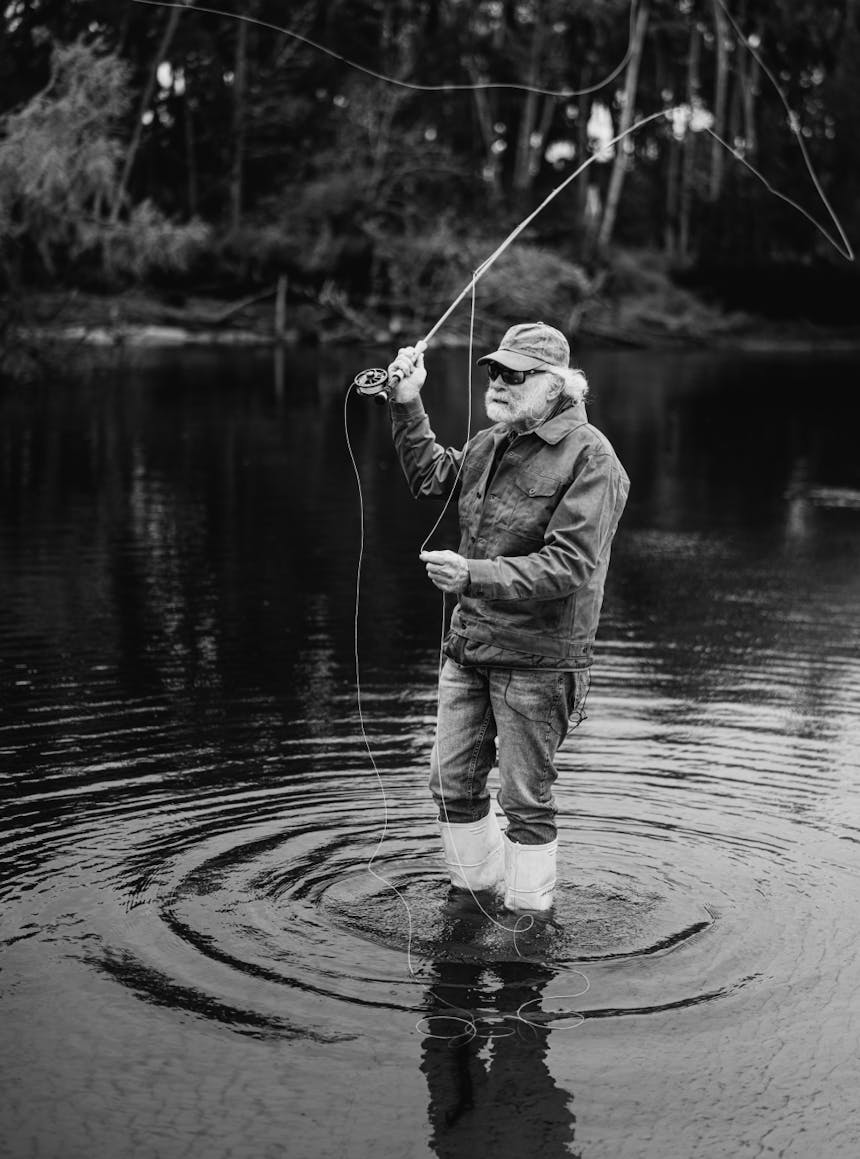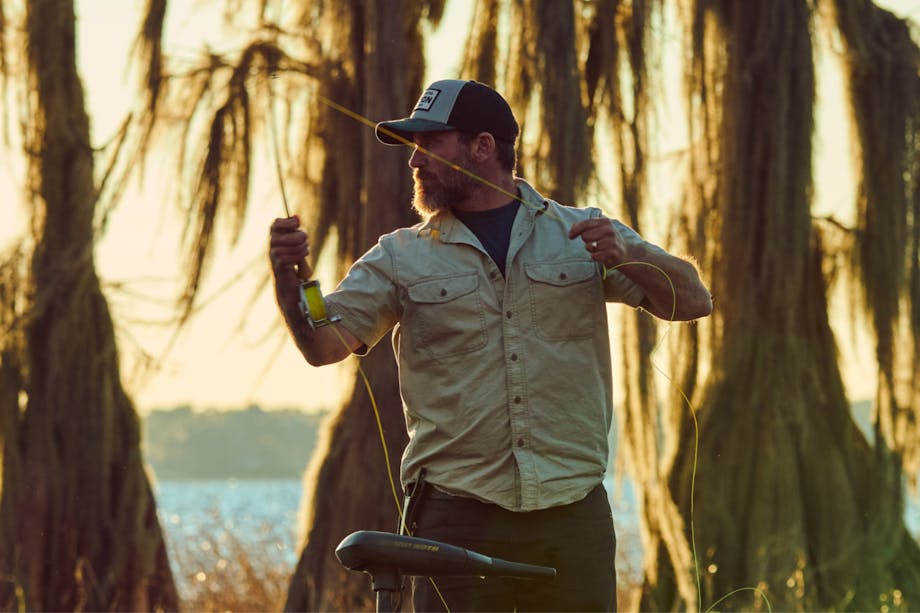He calls it “the report card.” It’s the shape of the flyline as it comes over your shoulder on the forward cast, and unrolls out there in the distance, for all the world to see.
“The flyline will tell you all you need to know about your cast,” Flip Pallot instructs. Whether or not you have moved the tip of the flyrod in a straight line. Whether or not you stopped your backcast abruptly enough. Whether or not you applied acceleration at the right time or the wrong time. “Mistakes you make on this end of the rod,” Pallot says, patting the fly reel, “are magnified on the other end of the rod.” Meaning the line, and the fly, and where these two dozen Flip Pallot acolytes hope it lands.


It would be hard to imagine a more rapt audience in the flyfishing world than at a Flip Pallot fishing school. That they take place in Flip Pallot’s driveway at his home in Mims, Florida, is part of the draw. Camp chairs form a sort of amphitheater in front of his garage. One wall bristles with dozens of deer skulls and antlers. Along another wall are scores of spin fishing rods and flyrods. Standing like squat columns at the Parthenon are two rust-streaked and brand-stickered freezers filled with wild game and fish meat—deer, hogs, turkeys, snipe, ducks, tilapia arrowed while stalking them by airboat and foot. There are push poles, trolling motors, archery targets, gas cans, deep fat fryers, and camouflage netting. Cases of Frigate Reserve Rum—the brand Flip helped start—crowd an airboat Flip has to clear off every time he takes it out. Which is often. “This is my 15th last airboat,” he laughs.
Meeting Pallot on his turf, in his backyard, where his wife, Diane, actually lights the candle in a portable john brought in for the school, is a thrill of the celebrity sort, for sure. A lady angler at the school, who wears an Islamorada fishing tournament shirt, says to another student: “Do you think Flip Pallot really just leans his fishing rods against the garage wall like that? I would have thought he would have some special kind of case.”
But it’s just a fishing rod, Pallot would say. It’s not a royal scepter. It’s simply a tool you use to do fun things in fabulous places. It’s that approachableness, that regular-guy gestalt about Flip, that draws fans to this retreat in central Florida. Sure, he’s a celebrity angler who fishes on billionaires’ yachts. But he wears blue jeans and poles a canoe with a long stick. He’s never lost his appeal as Everyman.


Pallot’s schools are crazy popular. Most are in collaboration with Mad River Outdoors, a huge online and brick-and-mortar retailer. Blane Chocklett might be teaching with Flip at one of the schools. Bob Clouser at another. Students snap up spots within minutes of them being posted online. They come to learn about Flip’s favorite knots and flies and why he cuts the loops off his fly lines.
But what they mostly want to learn is to cast a flyline like Flip Pallot casts a flyline. The flyline, Pallot tells the group, hides nothing. If the flyline loop is too wide, it tells you that your fly rod tip did not travel in a straight line. It a tailing loop builds at the end of your cast, it suggests that you let your hand drift backwards, weakly, when it came to a near-stop on the backcast. If the leader hooks one way or the other, the issue isn’t in the leader—it’s in your hand and in how you failed to track the cast correctly.

“You look at the flyline coming over your shoulder, and it’s the most honest thing in the world,” Pallot says. “I may or may not be able to turn you into the world’s greatest fly caster in the next two days. But I can teach you to read the report card. And then you will know everything you need to know to become the world’s greatest fly caster. Then it is up to you.”
The students nod and murmur. A few takes notes. After lunch, the class will move from the driveway and garage to a nearby casting lawn, and there will be much proof in the pudding. The lines will unfurl behind and in front of them, and tell them if their double-haul is technically proficient, or if they are dropping the rod tip, or if they are rotating the hand during the critical translation phase of the cast. It’s a lot to think about, Pallot says. Which is why you need to do it enough so that you don’t think about it at all. You just watch the loop coming over your shoulder, and the fly line will tell you if you are a fly fisherman or if you really just want to wear the shirts.
Edward Nickens writes for Garden & Gun, Field & Stream and Ducks Unlimited. He is editor-in-chief of Tail, the saltwater fly fishing magazine.





